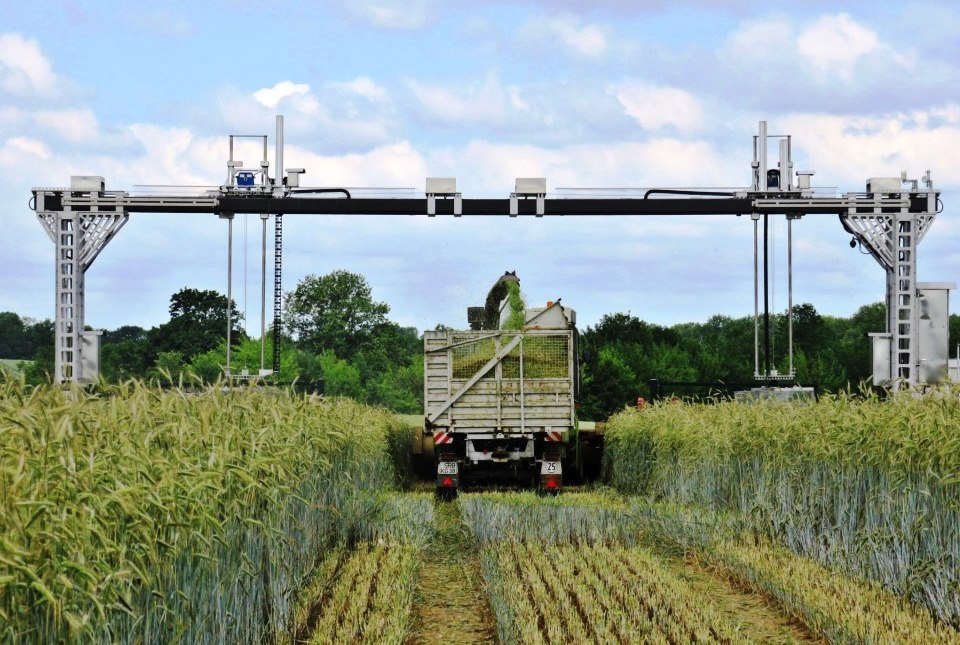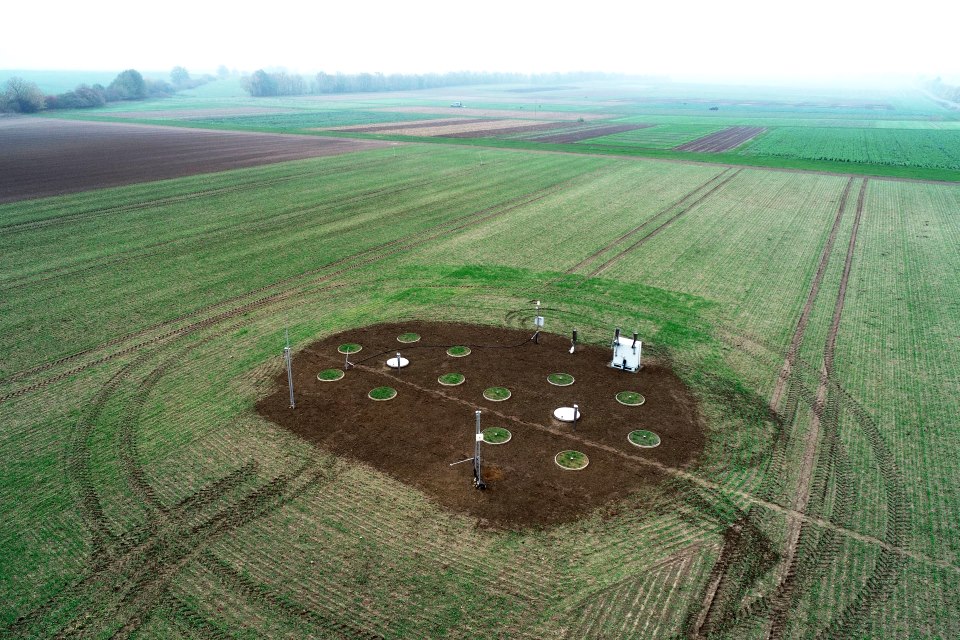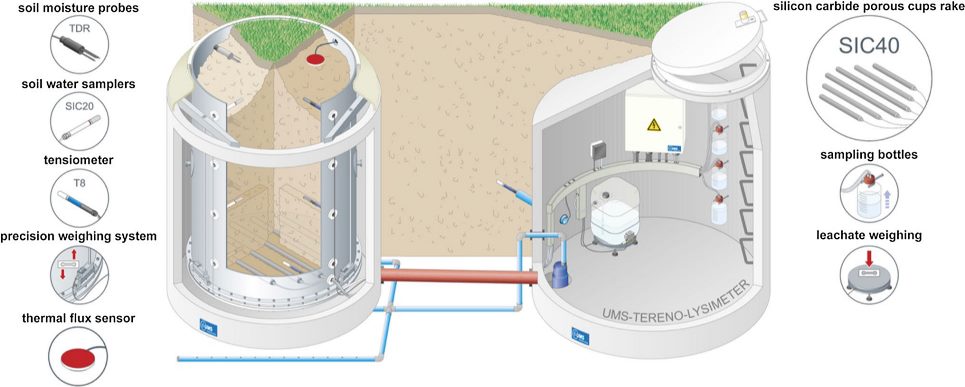Experimental Station Dedelow
The Experimental Station Dedelow is located in the eastern part of the AgroScapeLab Quillow (near Prenzlau). On 42 ha of experimental fields (sandy loam) different agricultural cultivation systems are realized with modern experimental technology. In addition, there are various technical devices such as the TERENO lysimeters and the autonomous gas exchange measurements of "CARBO-ZALF". The staff of the station supports further numerous projects regarding the planning and implementation of measurement programs in cooperation with farmers.
CarboZALF-D
At the CarboZALF-D experimental site near Dedelow (NE Germany) we quantify the magnitude, rates and mechanisms of soil C sequestration and release as well as plant growth, soil water and solute flux under controlled field conditions (Gerke et al. 2016; Hoffmann et al. 2017, 2018). A long-term manipulation experiment started in autumn 2010 with an artificial soil removal in sloping terrain. Since 2010 all carbon fluxes needed to derive a full carbon balance were measured at representative soils of the area (Sommer et al. 2016). The program includes a continuous CO2 flux monitoring (net ecosystem exchange, NEE), a quantification of carbon exports by crop harvest as well as solute transport of organic (DOC) and inorganic carbon (DIC). Summing up all fluxes yields soil-specific full C balances which equals the change in soil organic carbon over time (= Δ SOC). After 6 years the SOC stock of the artificially eroded site (Calcic Luvisol) has increased by 0.9 kg C m-2 in total. This effect has been described as "dynamic replacement" in the scientific literature. We observed surprisingly high mean annual C sequestration rates (144 g C m-2 y-1) - comparable to natural peatlands.To quantify the effects of fractional deep tillage on GHG and C dynamics a new field experiment was designed and established at the CarboZALF site. To measure highly dynamic GHG fluxes a modern gantry crane system was built (EFRE funding).

Gantry crane system at CarboZALF-D experimental site near Dedelow.
© Julia Lidauer
Harvest of wholecrop cereal silage.
© Gernot Verch
Lysimeters
The ZALF is operating 12 high-precision weighing lysimeters in “hexagon” systems, each consisting of six lysimeters arranged around a central access pit at the Research Station in Dedelow. The cylindrical (1.0 m2 surface, 1.5 m high, UMS-Meter Ltd.) lysimeters were filled with intact soil monliths from characteristic landscape positions of arable fields that were differently affected by soil profile modifications due to water and tillage erosion. With additionally installed moisture and pressure sensors and suction cups (Herbrich and Gerke 2017), the effect of erosional pedogenesis and agricultural management on the soil water balance and element leaching is quantified. These long-term observations will also provide a data basis for the calibration of crop and biogeochemical models for the possible transfer of site-specific results towards the heterogeneous arable soil landscape.
The first lysimeter hexagon filled with more-or-less eroded Luvisol monoliths (Fig. 6) is operating within the lysimeter-network SoilCan since 2010/11. SoilCan is part of the TERENO (TERrestrial ENvironmental Observatories) project of the Helmholtz Association (Pütz et al. 2016). The SoilCan network is studying the effects of climate and management changes on terrestrial ecosystems with lysimeters across Germany including lysimeters with translocated soil monoliths (e.g., Dedelow soil was also transferred to central and western Germany). The second lysimeter hexagon is operating since about 2013/14. Here, the soil monoliths are consisting of three hummock-hollow pairs (i.e., an eroded and a colluvic Haplic Regosol each) from arable fields different in parent material and water regime.

Lysimeter experimental site of SoilCan. © Gernot Verch

Cross-section of a TERENO-SOILCan lysimeter (left) and the service well (right).
© METER group Munich, Germany.
 References used in text
References used in text

